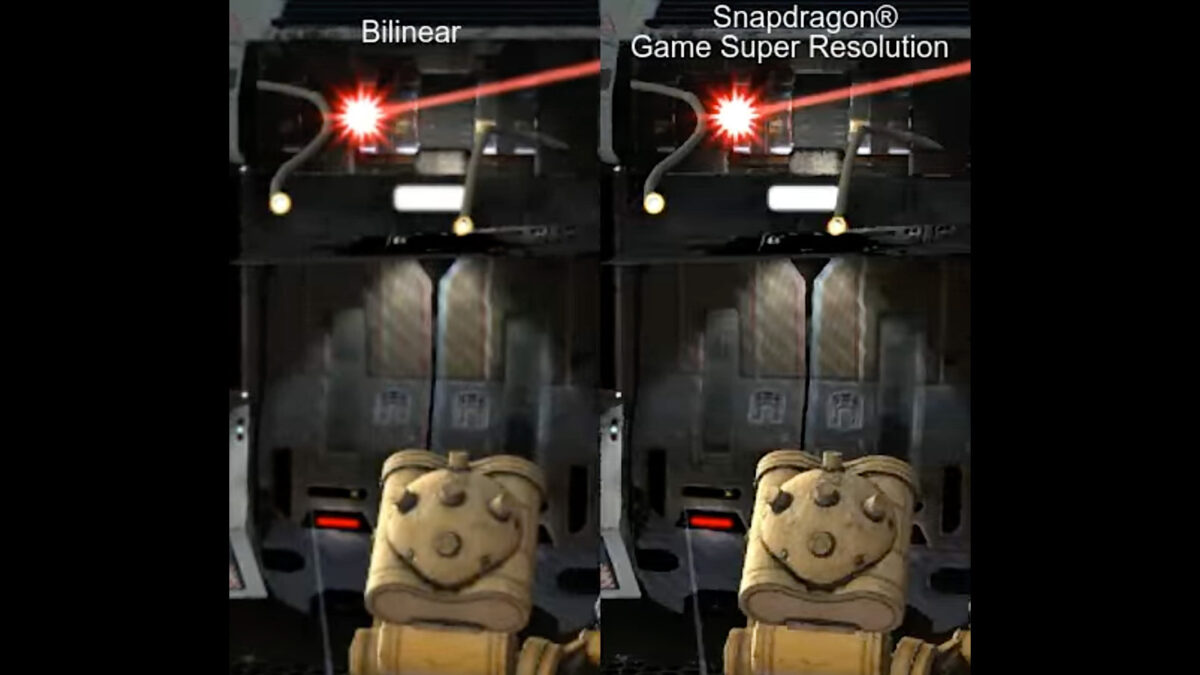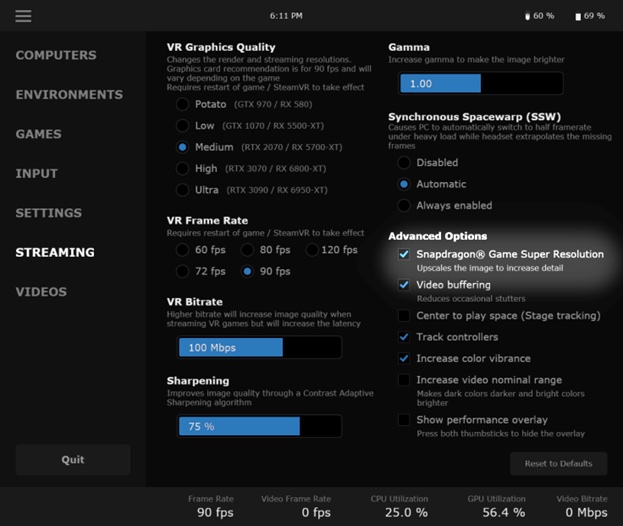Virtual Desktop can now upscale the resolution of PC VR games

Virtual Desktop now offers "Super Resolution", a feature that upscales the resolution of PC VR games. The headset does all the work.
Yesterday, a major update was released for the popular VR app Virtual Desktop, bringing an exclusive new feature to its PC VR streaming: Snapdragon Game Super Resolution support, or SGSR for short.
This upscaling technology is similar to AMD's FidelityFX Super Resolution, but is optimized for Qualcomm's Snapdragon mobile chips, which are also used in VR headsets. Qualcomm describes the feature as follows:
"Super resolution techniques create higher resolution images from lower resolution inputs by refining details and enhancing features to produce sharp and clear visuals while using less resources than native rendering. By utilizing super resolution, platforms, and applications, developers can increase the display resolution while meeting framerates and maintaining visual fidelity."
Higher resolution without performance costs
Virtual desktop developer Guy Godin and Qualcomm worked together to integrate Super Resolution into Virtual Desktop.
This feature will primarily help PC VR gamers with older or weaker GPUs. "The option works with Potato, Low, Medium quality (up to 120fps) and High (up to 90fps) and it upscales to Ultra resolution under the hood", Godin writes on Reddit.

A look at the settings. | Image: Guy Godin
Even those with newer or more powerful GPUs may benefit from this new feature: In particularly demanding PC VR games, you can reduce the VR Graphics Quality (which is the render and streaming resolution, see picture above) and use SGSR instead. The upscaling is done entirely on the headset and does not put any additional load on the PC. Note, however, that SGSR doesn't provide the same image quality as the native Ultra setting.
Watch the video below to see Super Resolution in action.
Super Resolution requires a headset that supports Virtual Desktop and runs on a Qualcomm Snapdragon XR 2 chip. These are currently the Meta Quest 2, Meta Quest Pro, Pico Neo 3, and Pico Neo 4.
Fewer artifacts on lower resolutions
More good news for PC VR gamers with less powerful systems: Super Resolution and the Synchronous Space Warp (SSW) rendering technique developed by Godin can be used simultaneously without any drawbacks. If the frame rate drops below a critical level, SSW generates artificial intermediate images to ensure a smooth gaming experience.
The latest Virtual Desktop update also brings higher quality video compression on Nvidia GPUs, especially at lower resolutions and high bitrates, independent of SGSR and SSW.
For a full list of improvements and fixes, check out Guy Godin's Reddit post. You can read more about the technology behind Super Resolution and its VR implementation in the following two articles:
- Introducing Snapdragon Game Super Resolution
- Using Super Resolution to Boost Resolution in Virtual Reality
Note: Links to online stores in articles can be so-called affiliate links. If you buy through this link, MIXED receives a commission from the provider. For you the price does not change.